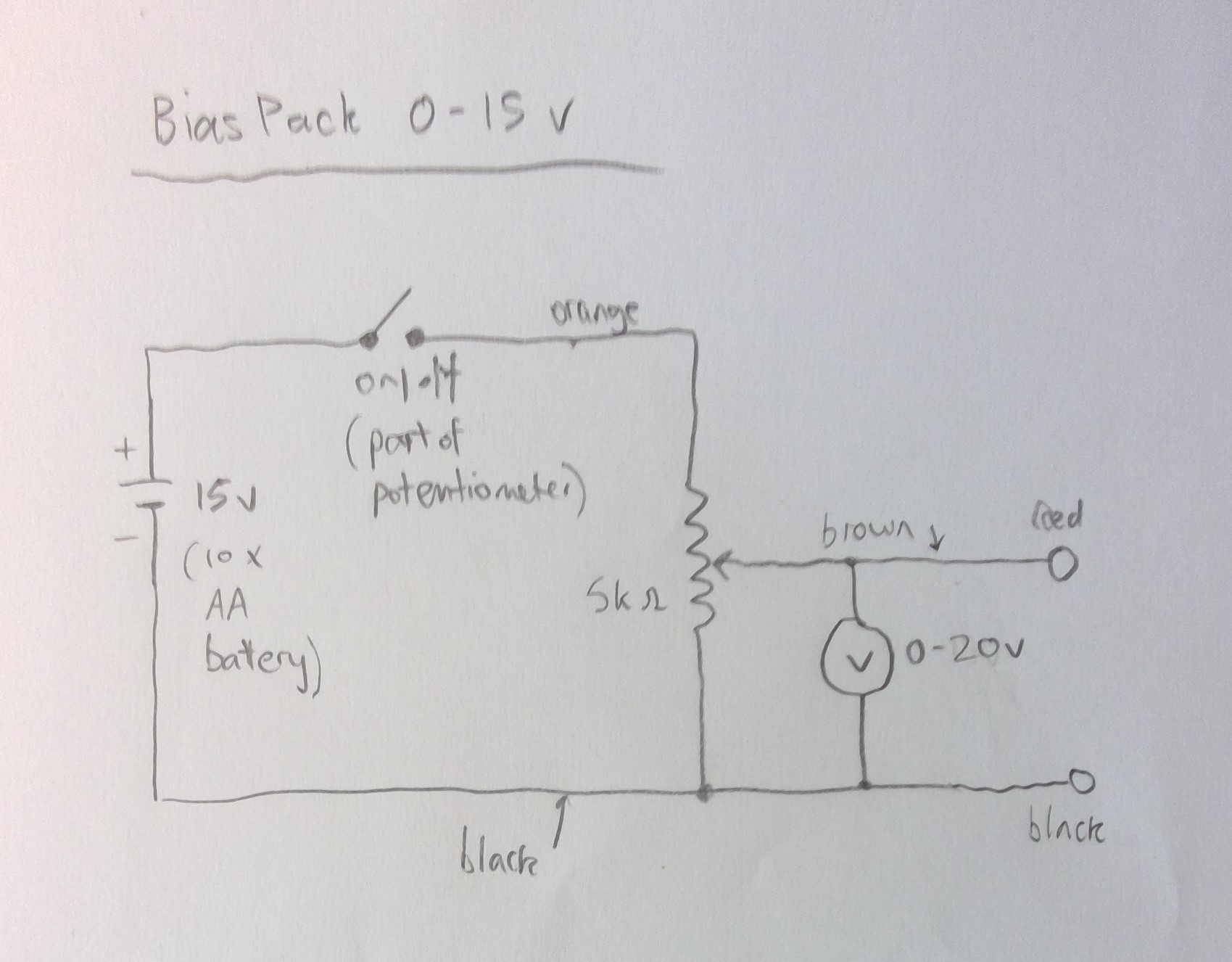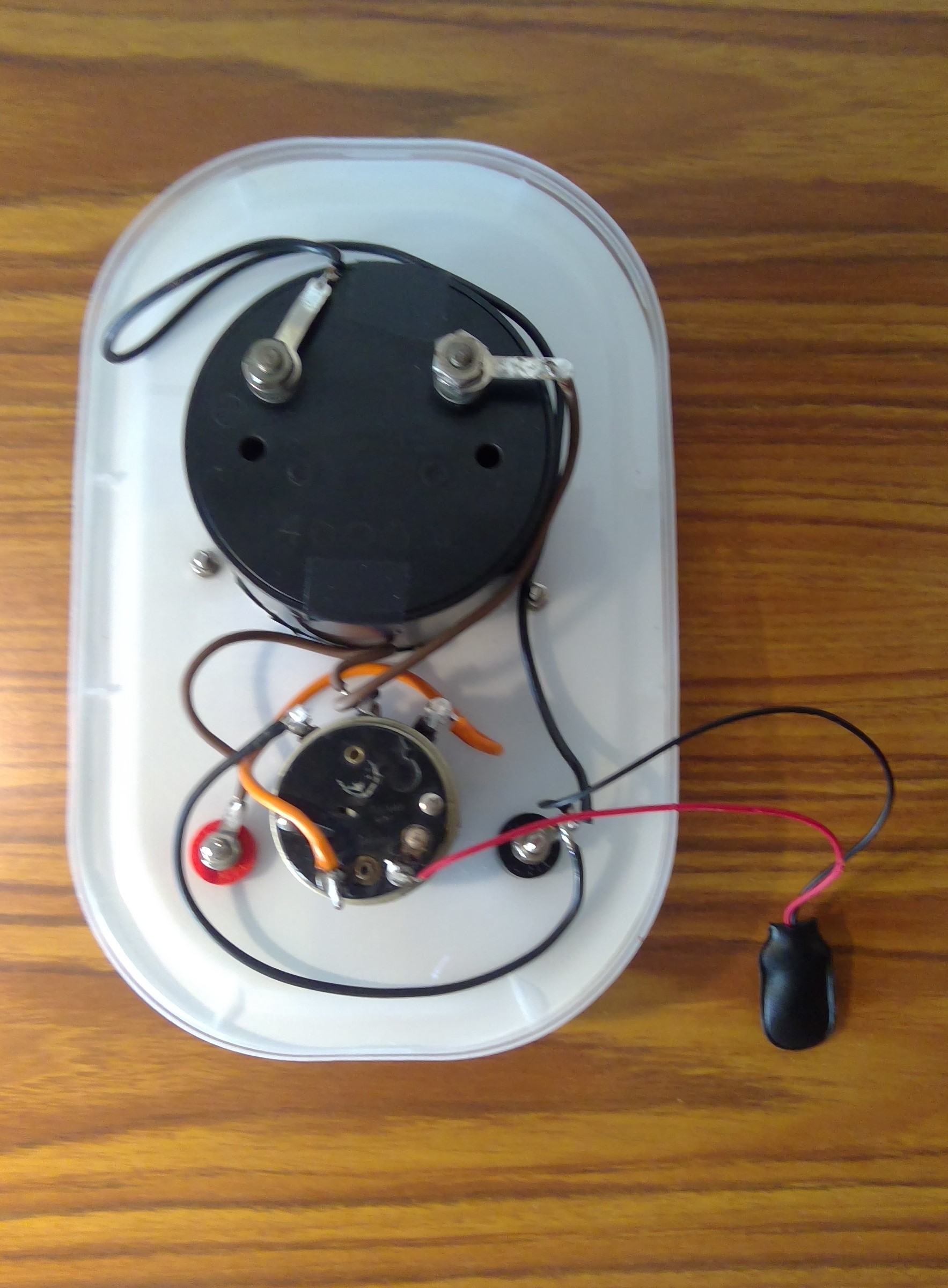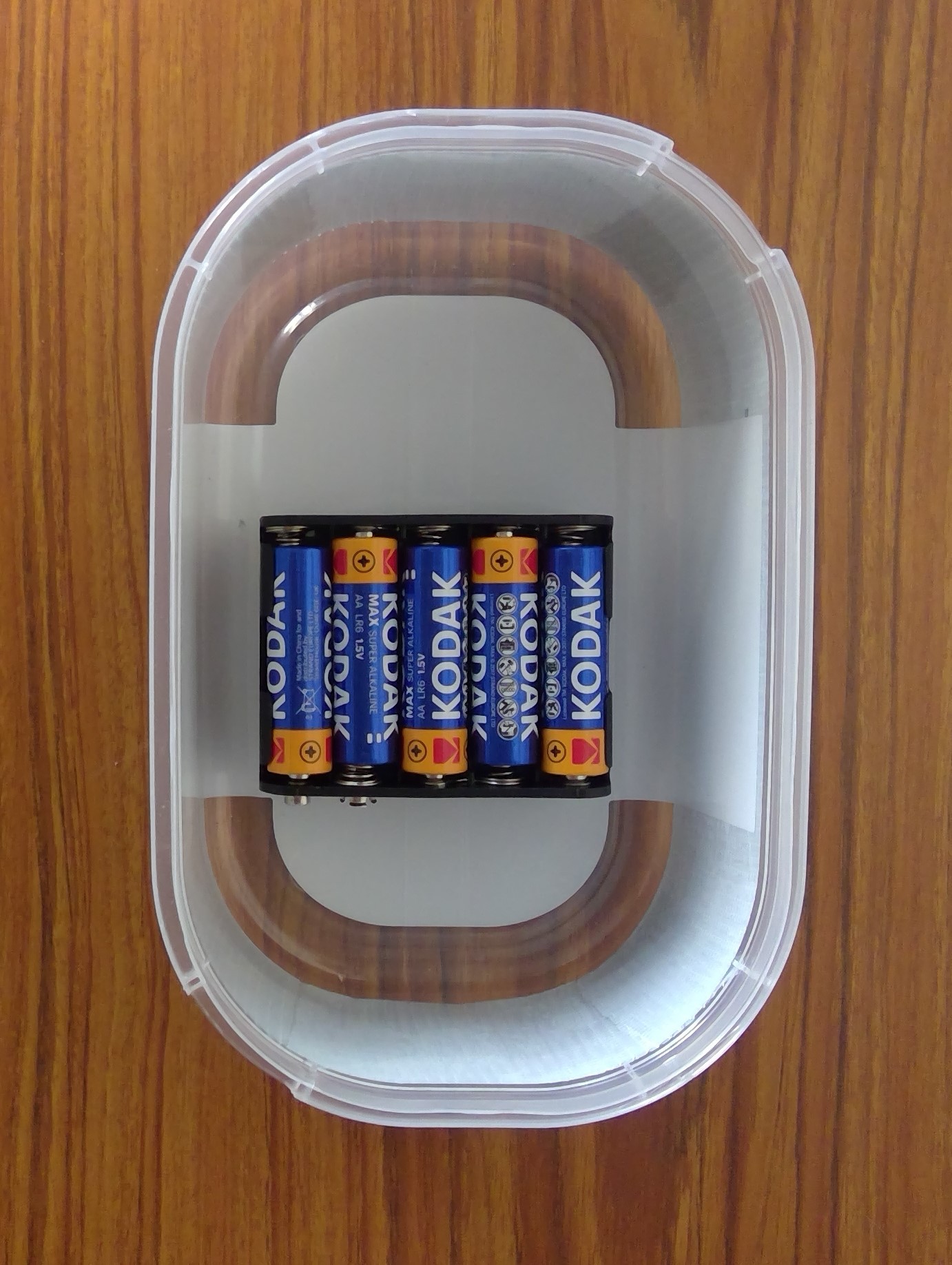OK this is still phase 1 - the power supplies. At this rate it will take several years to finish the project!
Anyway I realized that when battery-powered tube-based audio amplifiers drive loudspeakers, they need negative bias for the tube grid. And today I'm calling them tubes not valves. Usually this -ve bias is obtained from yet another battery, either called the C supply or just a grid bias supply. In the distant past, grid bias batteries were a thing you could buy. Here is someone making a reproduction grid bias battery
In this project the audio amplifier is experimental - this means I haven't designed it yet. I will need a variable bias pack. Basically it's a variable resistor and switch across a 15v battery:

Here is a picture of the insides (the large black blob is the rear of the meter and the small black blob is the potentiometer):

And here's the battery. I fastened it to the container with some bluetack and the battery snap in the above picture clips onto it:

And here's the final result outputting 12v:

This is designed as a variable voltage source to help with experiments, it's not an actual power supply and it's not designed to output any significant current. That's fine for battery tube audio amplifiers as they generally operate in class A (or AB1) where the grid is not driven positive.
As a "tube refresher", if the grid is always negative then no grid current flows, and the varying grid voltage causes varying anode current. If the grid is driven positive some current flows from the cathode (source of electrons) to the positive grid, thus grid current flows. Some tubes are designed for their grids to be taken positive as it can improve performance, but it means the driving stage has to provide some power.
Tubes allowing grid current are "power" tubes designed to give larger outputs. They are sometimes called "Class B" tubes as they are generally used in pairs for push-pull output. In most cases they are mains powered. But there are a few exceptions where there are two battery powered tubes in one envelope, intended to be used as a class B audio amplifier. One such tube is the type 19 twin triode, and I hope to experiment with this later on.
Also I'm not 100% happy with the "ice cream" tub containers, as they are a bit flimsy and their rounded shape does not make good use of space. In hindsight maybe I should buy some nicer plastic enclosures.
Anyway, this should be the end of the power supply experiments. Time to move onto stage 2, the audio amplifier!
Discussions
Become a Hackaday.io Member
Create an account to leave a comment. Already have an account? Log In.